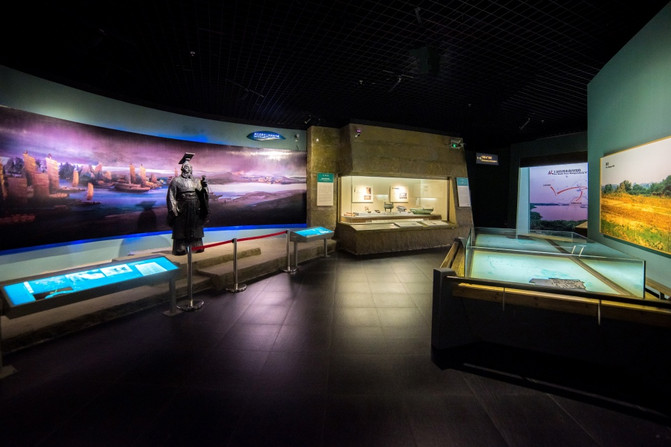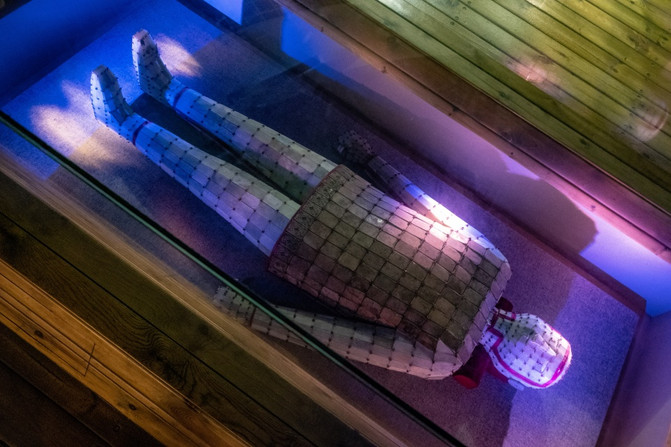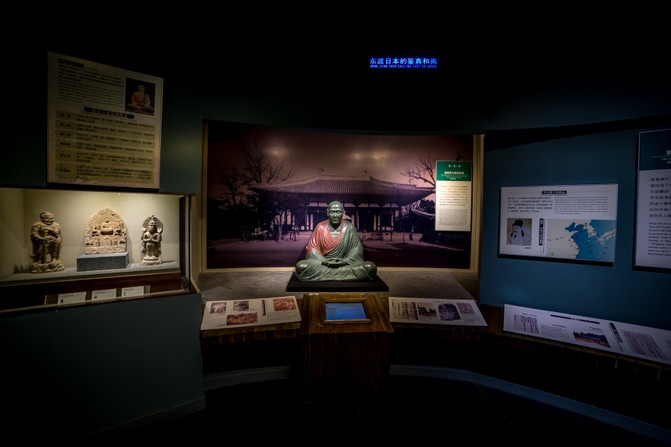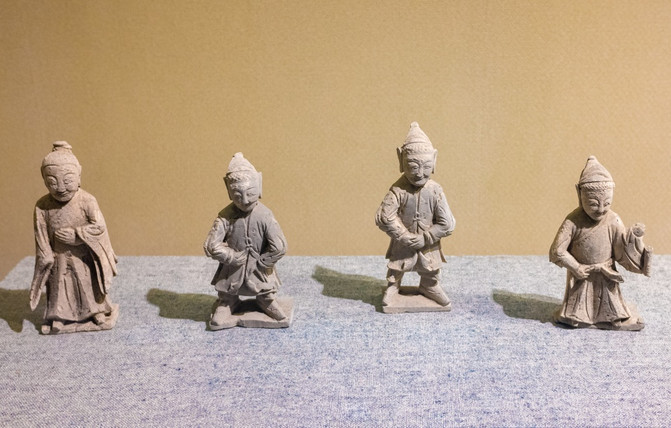Yang Yi'er, where is the famous Jiangnan city cow that once crushed Chengdu?
Waist a hundred thousand guan and ride a crane to Yangzhou. In the season of fragrant osmanthus, driving to Yangzhou for sightseeing is still full of vigor and vitality, as seen in the phrase 'fireworks in Yangzhou in March'. Anyone who enjoys Tang and Song poetry cannot avoid the 'Yangzhou plot', which is like a huge magnetic field that moves the joyful footsteps of people from all over the country. However, there are too many beauties in Yangzhou, and people in the 21st century are so busy. Where should we start? Spending half a day exploring museums is definitely a practical itinerary to avoid falling into the fear of choice.

Yangzhou has a long history of over 2000 years, but only one floor is used to describe it in the museum. After reading these, if I had to describe Yangzhou in one sentence, I would think of the word "internet celebrity". Geographical factors determine that Yangzhou is a very "red" city. Many celebrities from ancient and modern times have checked in here, and different eras have endowed it with different wave methods. And that kind of wind power at the forefront of the storm still continues to this day.

Yangzhou city first existed as a military stronghold. During the Spring and Autumn Period and the Warring States Period, King Fuchai of Wu launched a northern expedition against the state of Qi and dug a canal northward to supply soldiers with food and money. Yangzhou (Hancheng), as an outpost, had significant military significance and ultimately defeated the state of Qi as a result.

In the Han Dynasty, Yangzhou (Guangling) was enfeoffed to King Liu Bi of Wu. He boiled salt and cast copper coins here. Relying on these two factors, Liu Bi quickly grew stronger and became wealthy, proudly almost overthrowing the position of emperor.

After the Sui Dynasty ended the chaos of the Northern and Southern Dynasties, Yangzhou ushered in a moment of glory. Emperor Yang of Sui mobilized labor from all over the country and spent a huge amount of money to excavate the Grand Canal, connecting the Yellow River, Huai River, and Yangtze River waterways. The Yangtze River connects Bashu Lake to the west and reaches Suzhou and Hangzhou to the south. The materials from the entire Yangtze River Basin were continuously gathered in Yangzhou and sent northward to Luoyang to fill the huge grain warehouse of the Sui Empire. For a time, the function of the intersection in Yangzhou became prominent, and commercial transactions flourished unprecedentedly. In just a hundred years, by the Tang Dynasty, there was a prosperous scene of "the world is prosperous, and Yang Yi Yi Er" (Yangzhou first, Chengdu second).


The prosperity of Yangzhou city reminds people of Dunhuang, a key town on the Western Silk Road. Both are international trade channels that communicate between the East and the West. However, with the improvement of shipbuilding technology and the difficulty in controlling the Northwest Passage, the role of Yangzhou far exceeds that of Dunhuang. At that time, Yangzhou was like the current magic capital Shanghai, occupying the mouth of the Yangtze River. Merchants, envoys, and study groups from the sea all had to land in Yangzhou, exuding the aura of an international metropolis.

During the Tang Dynasty, when Chinese culture and technology were most dominant, there were many phenomena such as "Jianzhen Eastward Crossing" and "Yuanren Entering Tang to Seek Laws and Conduct Ceremonies".

In the Song Dynasty, with the rise of manufacturing, waterway transportation became increasingly important. However, by this time, the overland Silk Road leading to Kaifeng had been cut off, and the starting point of the Silk Road, Chang'an City, was extremely abandoned. And a large amount of materials from the Song Dynasty were shipped out of Yangzhou Port and continuously transported to the West, thus becoming the focus of the "Maritime Silk Road". Conversely, it is also a window for the world to peek into China.

Yangzhou was highly valued as a reserve territory of the Yuan Dynasty and once again mobilized a large amount of labor to repair the Grand Canal. This time, we traveled north and connected the route from Yuandu (Beijing) to Yangzhou.

The ancient land transportation was very inconvenient, and the Grand Canal between Beijing and Hangzhou was like the main artery of the entire country. The shipbuilding technology of the Yuan Dynasty was already very advanced, with a large number of Semu people driving large ships to shuttle between several coastal ports, transferring goods from East Asia to Europe. Western missionary Marco Polo also traveled to this city and was appointed as an official. However, with Marco Polo's travelogues sparking a search for the New World in the West, the Age of Discovery finally arrived. Hundreds of years later, the inland river transportation advantage of Yangzhou was finally replaced by sea transportation.


Although the canal is good, maintaining it is also very laborious. Due to several floods of the Yellow River in history, which flowed back into the Huai River, the canal was not as smooth. At the same time, the sediment in the upper reaches of the Yangtze River continues to deposit eastward, and the land in East China continues to expand, gradually transferring from the mouth of the Yangtze River to Shanghai.

During the Xianfeng period of the Qing Dynasty, after the Taiping Heavenly Kingdom movement, the canal was once again blocked, and bulk goods went north by sea and were unloaded from Tianjin Port. At this time, the West had already been able to produce giant iron ships through the Industrial Revolution, and the safety of maritime transportation had greatly improved, which led to Yangzhou Port becoming less important. In modern times, with the opening of the Jinpu Railway, transportation from Tianjin to Nanjing bypassed Yangzhou, causing its economic status to decline. This city, which had been hot for thousands of years, finally cooled down.

However, in the opinion of the editor, it is not a bad thing. On the contrary, Yangzhou, which has fewer people, is even simpler, like the landscape paintings in the Song Dynasty that have left a lot of white space, bringing more imaginative ideas and conducive to growing into a vacation and tourism city. Just like Kyoto in Japan, after giving up its capital to Tokyo and industrial development to Osaka and Kobe, it has freed up more space for tourists who come here out of admiration and received more praise.

In the 21st century, the beautiful scenery and delicious food of Yangzhou still exist, and its status as a historic city has not diminished. Without the burden of an economic center, the sunshine and air are more transparent, and the atmosphere of life is stronger. The slow pace reflects leisure and composure. Today, it is not necessary to travel to Yangzhou by crane with a lot of money. It is still a nice experience not to lose the artistic conception of Tang poetry to drive a car and spend a weekend watching volcanoes, soaking in hot springs and Huaiyang Cuisine.

Previous Article:Visit the current highest tech and most popular museum in China
Next Article:Pictures of Yangzhou, Suzhou, Hongcun and Mount Huangshan in the spring of 2021
